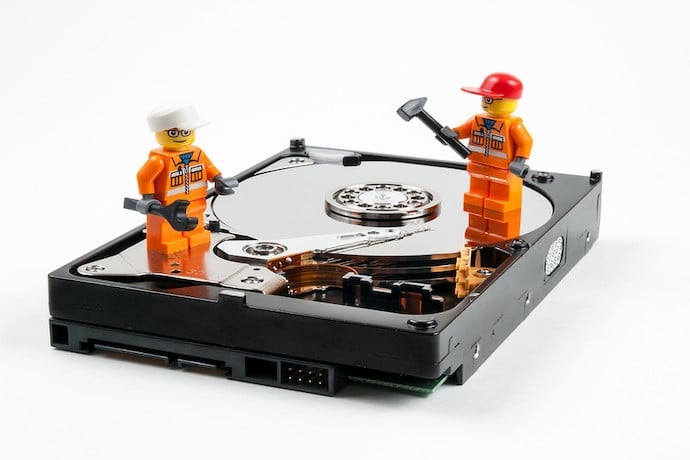A lot of computers come with a hard disk drive, or HDD installed inside of them already. However, don’t you find that name a bit weird? Sure, the hard disk drive has a spinning disk in it that stores your data…but why do we have to point out that it’s hard? Are there soft disks out there, too? And while we’re at it…why is it called a drive when there’s no car in sight?
First things first, let’s figure out why it’s called a drive. This word hails from an era where your storage didn’t come in one package, like a HDD. Instead, the bit where the data is stored and the bit that reads and writes the data were two different things.
Back in the early days of computing, there was something called the tape drive. This was back when we stored information on tape, which could be read by a machine. Instead of just feeding the machine loose tape, the tape was stored in cassettes with two spindles in it. To start, the tape would be wrapped around only one of these spindles.
When you span both spindles the same way, the tape would leave its spindle and slowly begin to wrap around the other. As the tape travelled between the spindles, you could read the tape’s content and see what’s on it. It was sort of like someone reading a really long scroll, but for machines.
The thing is, you needed a machine that could both read the data and automatically spin the spindles for it to be any good. That’s why you needed a special device called a drive, because it drove the cassette tapes and let you read the data on it. This term stuck with us, even when we have nothing to drive anymore. When was the last time you had to rewind a USB drive, anyway?
So that’s why we call it a ‘drive’, but why do we have to say that it’s a ‘hard disk’? As it turns out, there is a ‘soft disk’ out there; however, it doesn’t go by that name. Instead, it uses the much sillier name, ‘floppy disk’.
Floppy disks were, well, floppy. They weren’t like the hard CDs we have now; you could bend them. However, it wasn’t a great idea to do so, because it could damage the data on the disk.
To better protect the flimsy disk, manufacturers began putting them in hard plastic cases so people couldn’t bend them. The manufacturers added little windows in the case so the PC could still look at and spin the disk, but it was otherwise totally protected. In a weird way, the ‘floppy disk’ ended up being very solid; it’s just that its insides were flimsy.
So, the next time you hear the term hard disk drive, you know why we call it ‘hard’ and why it’s a ‘drive’. A lot of history behind a commonly-used name!
Learn More
Etymology of digital storage
What’s a floppy?
https://www.youtube.com/watch?v=9juPRLA6lGg
Hard Disk
https://wiki.kidzsearch.com/wiki/Hard_disk
How do hard drives work?
https://www.youtube.com/watch?v=wteUW2sL7bc
Data storage timeline
https://www.frontierinternet.com/gateway/data-storage-timeline/
Types of hard drives
https://ttrdatarecovery.com/types-of-hard-drives-user-guide/
floppy disk history
How floppy disk drives work
https://computer.howstuffworks.com/floppy-disk-drive2.htm
Floppy disk facts for kids
https://kids.kiddle.co/Floppy_disk
Magnetic tape facts for kids
https://wiki.kidzsearch.com/wiki/Magnetic_tape
Picture History of Data Storage
https://www.pingdom.com/blog/the-history-of-computer-data-storage-in-pictures/

